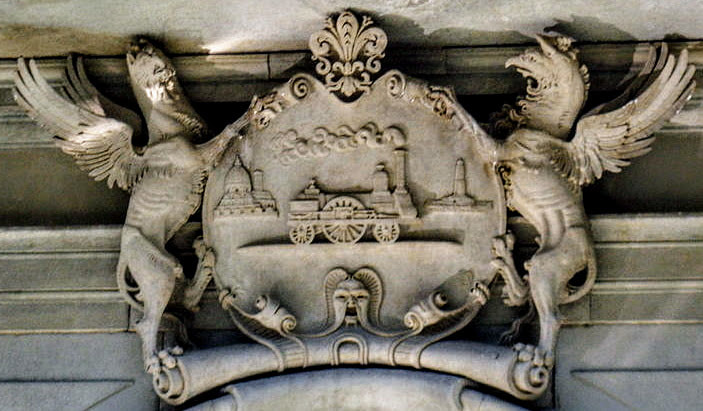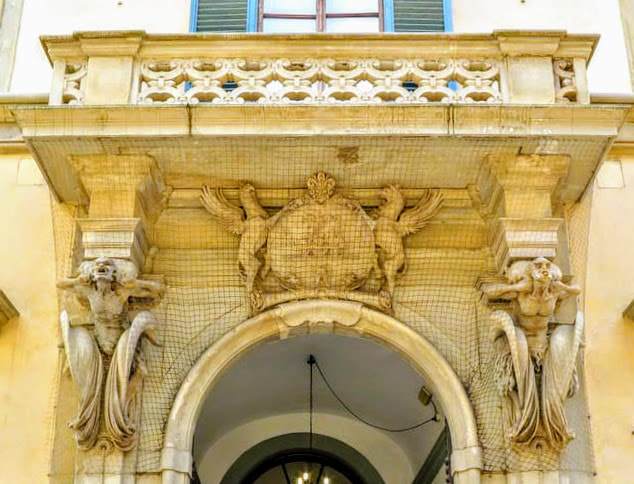Florence:
Palazzo Fenzi-Marucelli
|
The escutcheon above the entrance to Palazzo Fenzi-Marucelli (Via San Gallo, 10) depicts, of all things, a steam train!
Palazzo Fenzi-Marucelli, which was built in the first half of the 17th century for the Castelli family, is one of the most important post-Renaissance palaces in the city. Its architect was Gherardo Silvani (1579-1675). In 1659, the palazzo passed to the Marucelli family and a century and half later, in 1829, it was bought by Emanuele Fenzi, a rich banker, who, in the 1840s, financed the construction of the railway line between Florence and the port of Livorno. Symbols of the two cities, as well as a steam train, are depicted in the escutcheon. The railway line, which was one of the first to be built in Italy, was named the Leopolda in honour of Leopold II, grand duke of Tuscany (r. 1824-59). |

